As part of our September Spotlight on Battle Merchants, we strive to inform the readers of little extra tidbits surrounding the game. Games are made by people, and one of those tidbits we enjoy is learning a little bit more about the people behind them. Some designers are reclusive, while others are about as public as you can be without actually knowing them. Yet the larger factor isn’t visibility but time. Time is a precious commodity for most, as people are pretty busy. Luckily for you, Battle Merchants designer Gil Hova took a brief respite from his weapons peddling to chat with us.
Battle Merchants revolves around players trying to get the most clang for their buck. Make ’em as cheap as you can and then sell them for the largest profit possible. That’s the racket you’re in – and it’s a lucrative one. Well, if you know how to shop your wares among the four weapons-hungry factions that is. It’s not your concern what becomes of these weapons or what they plan to do with them. You’re simply providing a service; no need to drag ethics into it. Instead, we’ve dragged in the head weaponsmonger himself for a little reality check. Enjoy!
Round One Questions
CR: What was your Gateway Game?
 It depends on how you look at it. Growing up in the 80s, I somehow got into Steve Jackson’s games. This was well before Munchkin; I’m talking about Car Wars, Illuminati, and Ogre, as well as RPGs from SJ and other companies – Toon, GURPS, Star Wars, Ghostbusters, and Paranoia.
It depends on how you look at it. Growing up in the 80s, I somehow got into Steve Jackson’s games. This was well before Munchkin; I’m talking about Car Wars, Illuminati, and Ogre, as well as RPGs from SJ and other companies – Toon, GURPS, Star Wars, Ghostbusters, and Paranoia.
The only problem: I had no one to play with. I wasn’t a very well-socialized kid; I’m sure most of you can sympathize! So I played games like Car Wars and Ogre solo, and I read my RPG rulebooks with an intensity that seems kind of sad in retrospect.
I was also really into video games, and as a kid, I always wanted to be a video game designer. In my early twenties, I decided to take it more seriously. I figured in order to become a better video game designer, I should learn how to design a board game.
So in 2003, I went to some game conventions. I tried games like Munchkin and Settlers of Catan, but it was there that I played the first board game that completely blew me away: Puerto Rico. I suppose that was really my gateway game. That game taught me that I prefer board games to video games, by a factor of about a million.
CR: What was the last game you really enjoyed playing (besides Battle Merchants)?
Global Mogul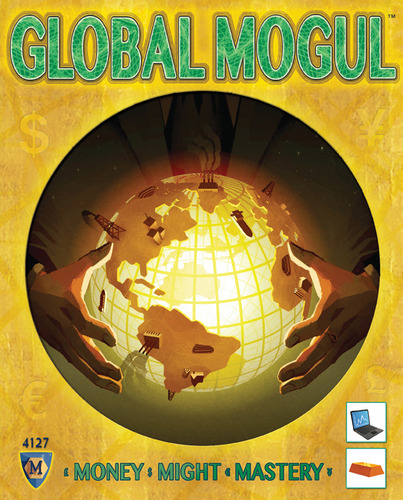 ! It’s the third-ugliest game in my collection (behind Cannes: Scripts and Stars and the clamshell version of Glory to Rome). I was pretty disappointed to see how much the game looks like a prototype, with a text-heavy layout and icons that look like clipart. But the game plays like a beast – lots of good, dense, fantastic decisions. Completely my kind of game, and one I can’t wait to play again.
! It’s the third-ugliest game in my collection (behind Cannes: Scripts and Stars and the clamshell version of Glory to Rome). I was pretty disappointed to see how much the game looks like a prototype, with a text-heavy layout and icons that look like clipart. But the game plays like a beast – lots of good, dense, fantastic decisions. Completely my kind of game, and one I can’t wait to play again.
CR: How big is your game collection?
A little over 200. I’m actively working to keep it around that size; I’ve been selling off games I don’t play that frequently. That way, I’ll make sure that none of my games gathers too much dust.
CR: What is your favorite type of game to play?
 I like dense and thick Euros, the ones that take about 2-3 hours to play. Brass, Age of Steam, Power Grid, Terra Mystica, Trajan, Goa, and Navegador all scratch that itch. I don’t like games with too much direct interaction, because I prefer games to reward planning and building.
I like dense and thick Euros, the ones that take about 2-3 hours to play. Brass, Age of Steam, Power Grid, Terra Mystica, Trajan, Goa, and Navegador all scratch that itch. I don’t like games with too much direct interaction, because I prefer games to reward planning and building.
When you have direct interaction (especially when one player can attack another player), it disincentivizes planning and building. “Don’t go after me, go after her, she’s the leader!” is usually the sign of a game that’s not up my alley.
CR: How do you feel about Monopoly?
Not good. Both because it’s a mediocre game at best that overstays its welcome, eliminates players, and cannot end in a close game, and because the general public sees it as the model of a board game. Imagine if the world thought the finest dining in the world was McDonald’s!
On Battle Merchants
CR: Rare is a game themed around combat without being involved directly in it. Did that theme evolve first or the mechanics? Similarly, the idea of being an arms dealer in Battle Merchants isn’t all that common. When did you come up with desire to make a game about weaponmongering?
I’ll answer both questions at once. The design was theme-first; I was originally interested if I could make a game about the military-industrial complex. I didn’t want to beat players about the head with any overbearing messages. I feel strongly that if you want people to hear your message, you write a story or make a film, not make a game. Games are more about the paths that players choose and how their experience changes each time. As Eric Zimmerman recently wrote, “Games are less a work of literature and more of a kind of grammar – a set of possibilities that create meaning as they are mixed and matched, used and misused through play.”
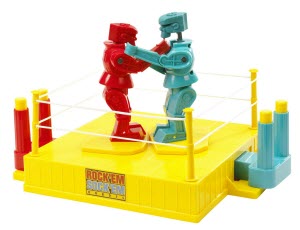
Getting the wrong idea.
At the same time, I see that gamers are tired of the same old themes in games. While I believe that these so-called “lazy themes” serve a purpose, it’s nice to have my games remain distinctive and stand out.
I would like to never design a game about building a city or a castle, or trading silk in the Mediterranean, or fighting zombies or Cthulhu or pirates or anything else like that. And especially nothing about bloodless colonization; that’s a theme that gets uncomfortable quickly the more you think about it.
Battle Merchants was originally about building and selling fighting robots. It had a science-fiction theme. That sounds great, but I found I had a problem: I would ask people, “Hey, do you want to play my game about building and selling fighting robots?” and they would answer, “Sure, I’ll play your game about fighting robots.” See the difference?
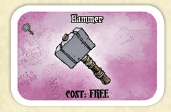 That was a dissonance I started to notice the more I playtested. People eventually liked the game, but it wasn’t what they were expecting when they sat down at the table. I actually went back on my promise and tried it with a city-building theme, and that was simply dreadful. But the fantasy arms merchants theme turned out to work beautifully.
That was a dissonance I started to notice the more I playtested. People eventually liked the game, but it wasn’t what they were expecting when they sat down at the table. I actually went back on my promise and tried it with a city-building theme, and that was simply dreadful. But the fantasy arms merchants theme turned out to work beautifully.
This is why I tell new game designers to not put a lot of time or energy into game art before everything gets solidified. The game makes all sorts of changes during playtesting. There are very few mechanisms in Battle Merchants that have survived from the original prototype.
CR: Game design is always a long process. Was there anything you had left out to streamline gameplay that you wished had made the final cut?
I don’t have any strong regrets here! The closest thing is that the reward mechanism for selling to a race was totally different. Originally, you didn’t pick up reward tiles when you sold to a race. Instead, after a race lost a battle, they’d move up on a track. The more they lost a battle, the more money they would pay, and if they lost too many battles, they would start paying less. The player who had the most surviving weapons on the race that lost the least got an endgame bonus.
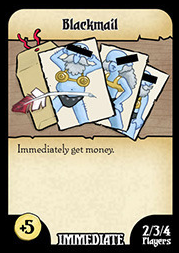
Kingdom cards help get money too.
This is one of those mechanisms that sounds awesome in theory, but it turned out to be fiddly and overly opaque in practice. There were a lot of rules about how each race’s payouts changed from battle to battle, and players had such little control or foresight over it that no one really cared.
I tried a different system, where every time you sold to a side, you got a reward tile from the other side. This was mechanically sound (it kept players from wanting to just always sell to the same race) and it was thematically sound (the other race got jealous, and wanted to pay you more), but it was counterintuitive. I despaired, because I didn’t want to just give players a bonus for selling to the same race. I didn’t want that sort of out-of-control snowballing.
Then a playtester at Protospiel suggested the current system; you get a reward tile every time you sell to a race, but you could only get one tile per race per season. Brilliant! It was simple and effective. I wish I’d thought of it myself.
So while I miss the extra thematic impact of the battles’ outcome having an effect on the price, I love the simplicity and transparency of the new system.
CR: What would you say is your favorite part of this arms trading game?
It’s very unique; there aren’t many games out there like it. I tell new players that it plays like a cross between Power Grid and Small World.
It also doesn’t feel like a lot of economic games out there, partly because of the unusual theme, and partly because it has a ruleset that’s a lot simpler and more approachable than most economic games.
CR: Battle Merchants was the result of a successful Kickstarter after its initial attempt was pulled. Were there design changes to the game with the relaunch or was it more logistics?
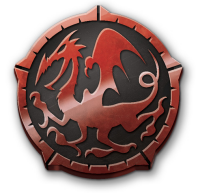 No design changes; it was all Kickstarter stuff. One of the biggest issues was that Minion Games and I set up different player counts as stretch goals. That gave the incorrect impression that the game only really worked for four players, and that the two and three-player games weren’t really playtested. I also let Minion handle all public presence, and that was a huge mistake. It gave the impression that I didn’t really care, and nothing’s further from the truth.
No design changes; it was all Kickstarter stuff. One of the biggest issues was that Minion Games and I set up different player counts as stretch goals. That gave the incorrect impression that the game only really worked for four players, and that the two and three-player games weren’t really playtested. I also let Minion handle all public presence, and that was a huge mistake. It gave the impression that I didn’t really care, and nothing’s further from the truth.
We relaunched with less expensive components, better stretch goals, and with me vowing to have a more active online presence. With lots of work from James [Mathe] and I, and lots of generous backing and word of mouth from our supporters, the game funded!
CR: Let’s talk Salesman Steve then. The game is billed as 3-4 players, but Salesman Steve seems like it was created just to make two-player mode possible. Was two-player intended since the beginning or did he sort of show up as development went on?
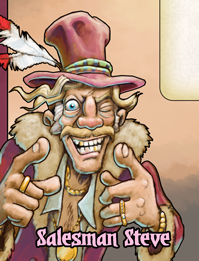
Look at that smile…
He just showed up. I wanted the game to play with two players, but it felt too static with the existing ruleset. Steve helps tremendously, because the board state changes enough to keep things interesting with two players. Additionally, Steve’s actions are transparent enough that a wily player can use his sales to her advantage. That gives an excellent zero-sum mechanism to the two-player game, which is something that doesn’t exist at other player counts.
It’s also important to note the extra Kingdom Card/Craft Card discard rule in the two-player game. Without it, one player could stock up on Kingdom Cards and the other on Craft Cards, and they wouldn’t be interesting.
Instead, you can never expect the cards to stay when it’s not your turn, and the other player can choose a card that will force a card you want to get discarded. It’s another good zero-sum mechanism that the two-player mode really needed.
CR: Yeah, but how much can we trust Salesman Steve? We want to, but something in his smile says to be careful…
To paraphrase Steve Albini, he’s just a bad penny, I’d trust him as far as I can throw him. And you can’t throw him too far.
CR: Lastly – answer this one for us: vorpal blades beat standard weapons, sure, but how does a vorpal blade compare in battle with a power-wrought sword, a First Age elven sword, or a blade of Valyrian steel?
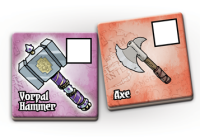 Vorpals beat everything. At least according to the advertising copy!
Vorpals beat everything. At least according to the advertising copy!
[Editor’s Note: We’re eager to test this theory. If you happen to have a spare heron-marked blade or weapon made before the fall of Gondolin, let us know!]
Do you have the ability to schmooze with clients, play spin control, and deal with customers pleasant and contemptible alike, all in the name of getting a handsome payout? If so…well maybe you may want to revisit your convictions. Within Battle Merchants there’s slightly less of an amoral feel. Instead, your focus is simply on the creation and sale of these weapons of warcraft. Plus, those hobgoblins totally had it coming.
If you’re up for some underhanded merchant sales the sake of profit and more profit, then now is your chance. We’re helping you get into the arms market.
Just click here to learn about getting your first shipment.
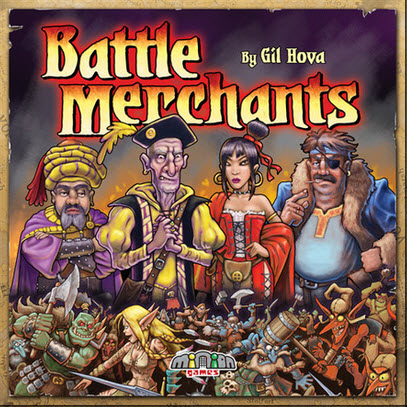
Photo Credits: Battle Merchants cover and game pieces by Minion Games; Global Mogul by Mayfair Games.
